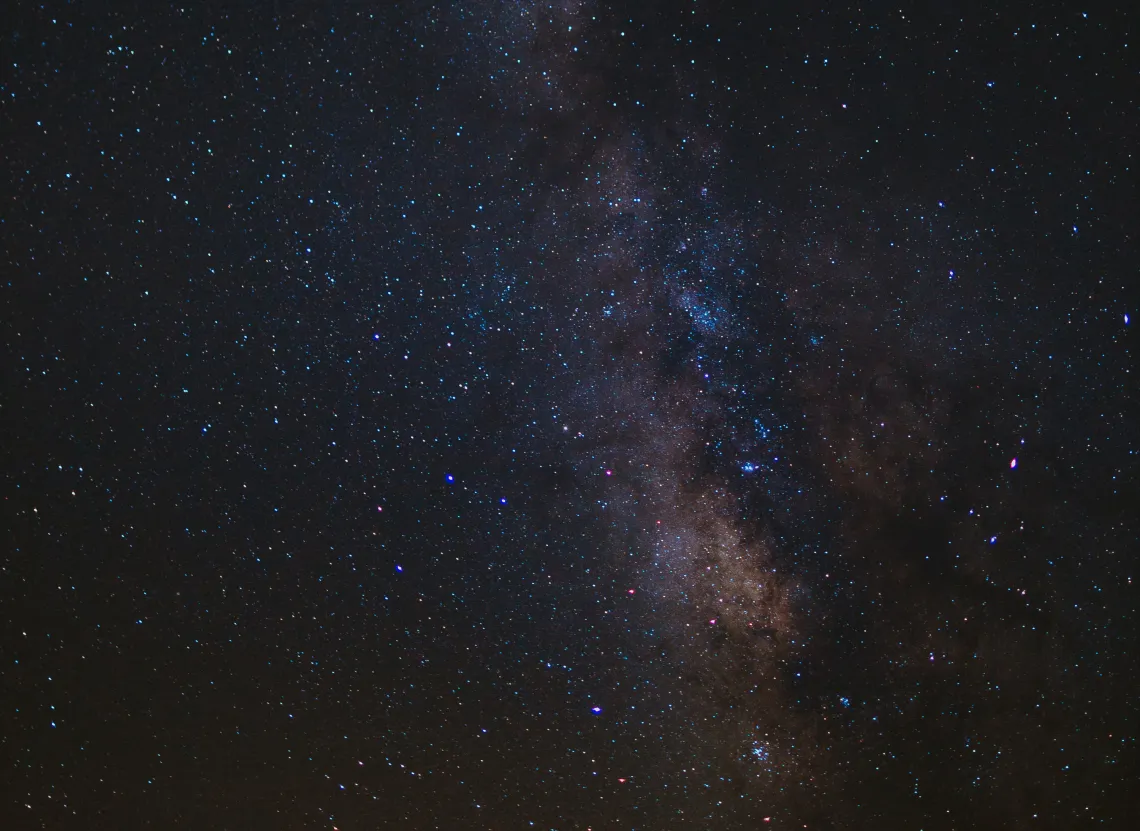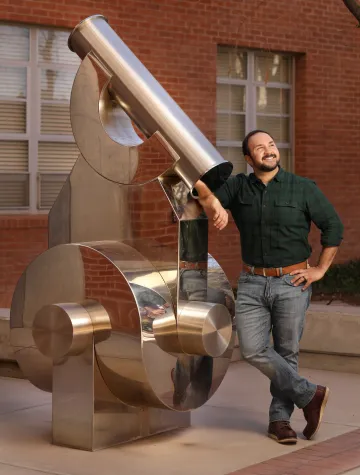Uncanny Vision
UArizona astronomy postdoc leads a NASA mission

In 2018, Carlos Vargas, driven by dreams of far-away galaxies, set out for remote eastern New Mexico. He’d heard that a certain University of Arizona professor would be there, hanging a telescope from a very high balloon. He planned to ask some of the astronomy questions that filled his head.
The journey from Las Cruces took nearly four hours. When Vargas, sporting his new doctorate in astrophysics, reached Fort Sumner, he met Erika Hamden, who was helping launch a telescope called FIREBall-2 into the stratosphere. Vargas already had applied to be a postdoc researcher in Hamden’s lab at UArizona’s Steward Observatory.

They met. They clicked.
He was hired.
“I told him, ‘You can come to Arizona, and we’ll do interesting things,’” Hamden says.
Vargas had two job offers in his pocket: at the pioneering Aerospace Corp. in Los Angeles and at Los Alamos National Laboratory. But he opted for Hamden’s lab and a chance to build his own compact space telescope. “And now I love Arizona,” he says.
Hamden’s project in those days — the Faint Intergalactic Medium Redshifted Emission Balloon, thus FIREBall — was observing the bits of light coming from the outskirts of certain galaxies that may reveal clues to how all galaxies (and, in fact, all that exists) came to be.
Vargas’ imagination caught Hamden’s interest. “He had a crazy idea,” she says. “Some people said it wouldn’t work.” Experts told him he needed a big telescope, but his proposed idea started with one just the size of a minifridge. Ultimately, NASA agreed with Vargas.
Vargas has been named the principal investigator of a project to create the space telescope he designed.
The Aspera grant brings a budget of $20 million, the limit for the first round of NASA’s Astrophysics Pioneers program for ventures by young scientists. Four projects were funded, with the other three coming from NASA Goddard Space Flight Center, NASA Marshall Space Flight Center and the University of Chicago.
For Vargas, space always ranked high, alongside baseball (he was the varsity catcher at his high school in Sayreville, New Jersey) and jazz guitar. As a serious “Star Trek” fan — “since I was 3 years old,” he says — he has always cherished the great questions that drive the Aspera mission: “Who are we? How did we come to exist? How did the planets evolve? How did ours evolve to support life? How do galaxies form and evolve?”
Traditionally, scientists have looked at the most obvious targets in galaxies — the bright stars. But a galaxy contains a variety of other things: dark matter, black holes, dust, and, enveloping it all, gases consisting of atoms of hydrogen, oxygen and carbon.
The faint light coming from those gases holds clues to the evolution of galaxies, and Vargas and his team will be building new devices to map them.
For astronomers, it’s critical to know how those gases change galaxies and get transformed into stars. Seeing galactic gases is among the most difficult tasks in astronomy. The clouds send out only a handful of particles of light, or photons, and astronomers struggle to capture them as images with telescopes and sensors.
Aspera is expected to fly in 2024 to a low Earth orbit of about 780 kilometers (roughly 500 miles) above the surface. There, it will sail along the zone between the sunlit area and the dark of night called the “terminator line.”
Vargas is partnering with scientists from Columbia University, the University of Iowa and Bochum University in Germany. The crew will assemble the telescope at the Steward Observatory labs and at the UArizona’s Tech Park.
Some components will come from Blue Canyon Technologies in Colorado and from Ascending Node Technologies in Tucson.
The core of Vargas’s mission is distinctive: four small telescopes with primary mirrors just a few inches across and detectors designed to “see” ultraviolet signals. He believes this system will collect the images he needs.
And the results, both beautiful and valuable, may tell us things about galaxies that Vargas believes everyone wants to know.
It’s rare, and a bit risky, for a postdoc to go after such a big NASA mission grant. A postdoc position lasts only three years, so the first two years are crucial. If you invest time in making a NASA proposal and fail to get selected, you can lose other chances to compete for your next position.
But for Vargas, the risk was well worth it, says Buell Jannuzi, the Steward Observatory’s director. Now, Vargas has brought the UArizona Astronomy Department the largest grant that any postdoc has achieved. “He had the necessary level of maturity and he understood what he wanted to do,” Jannuzi says.
